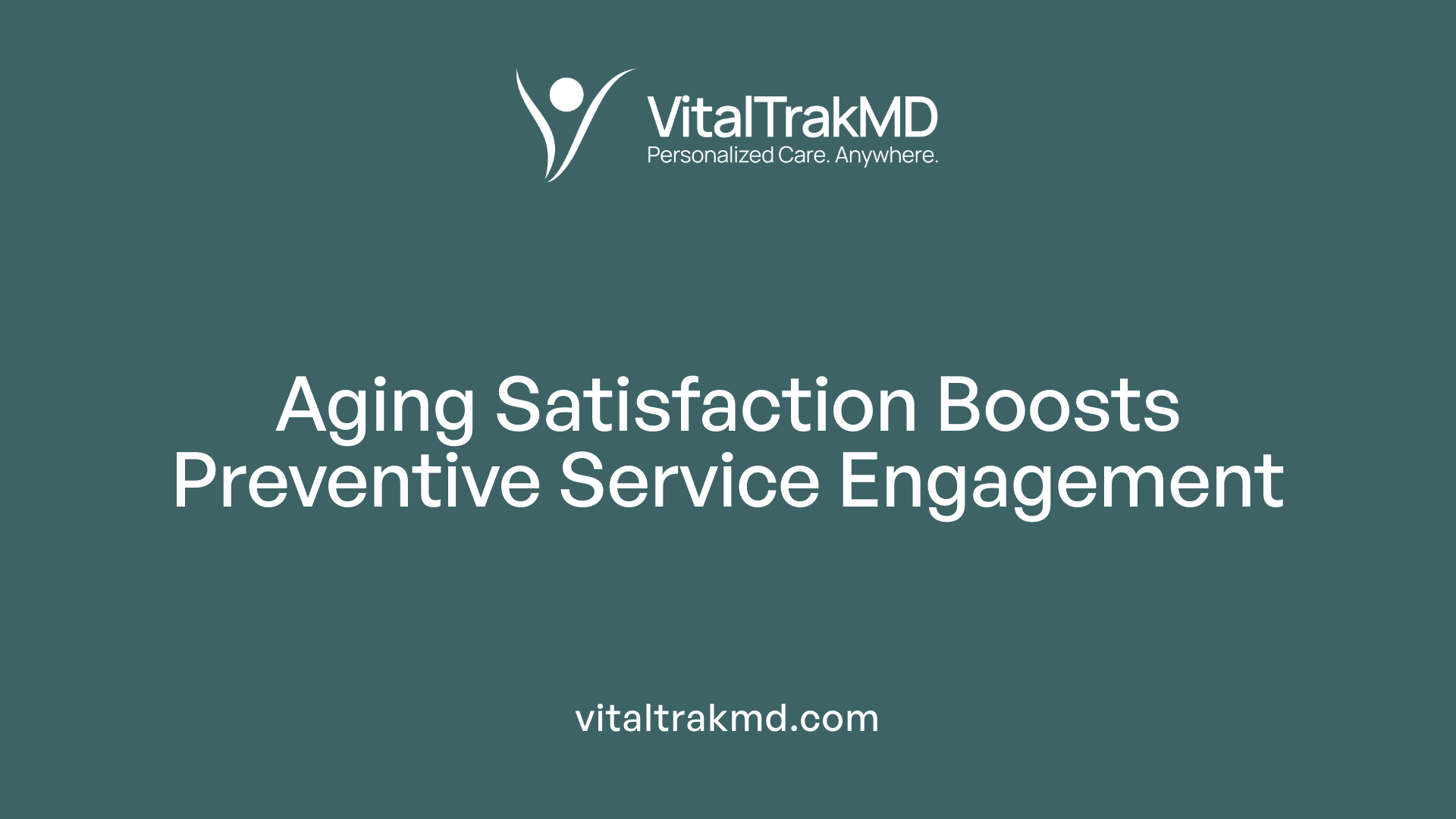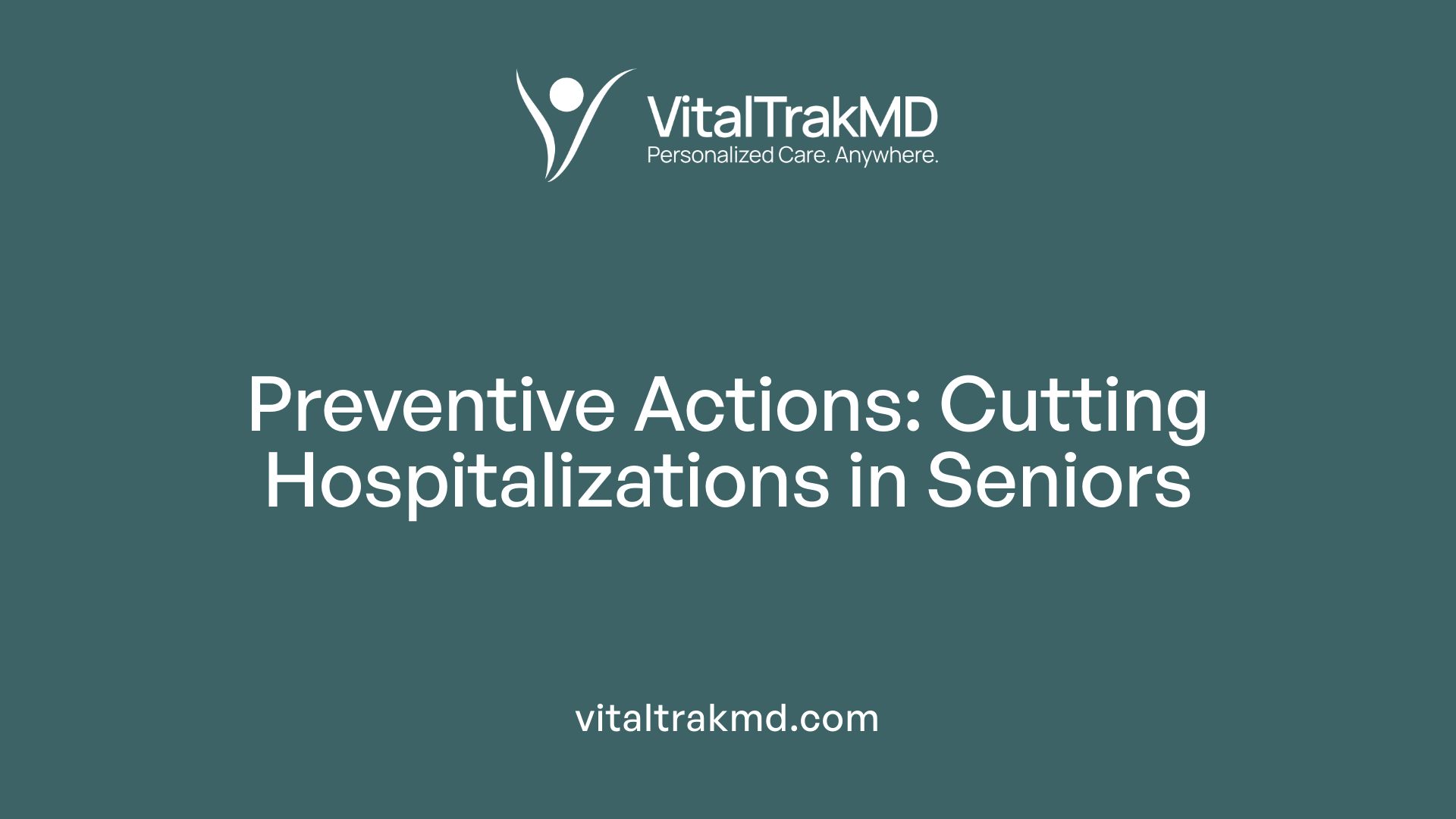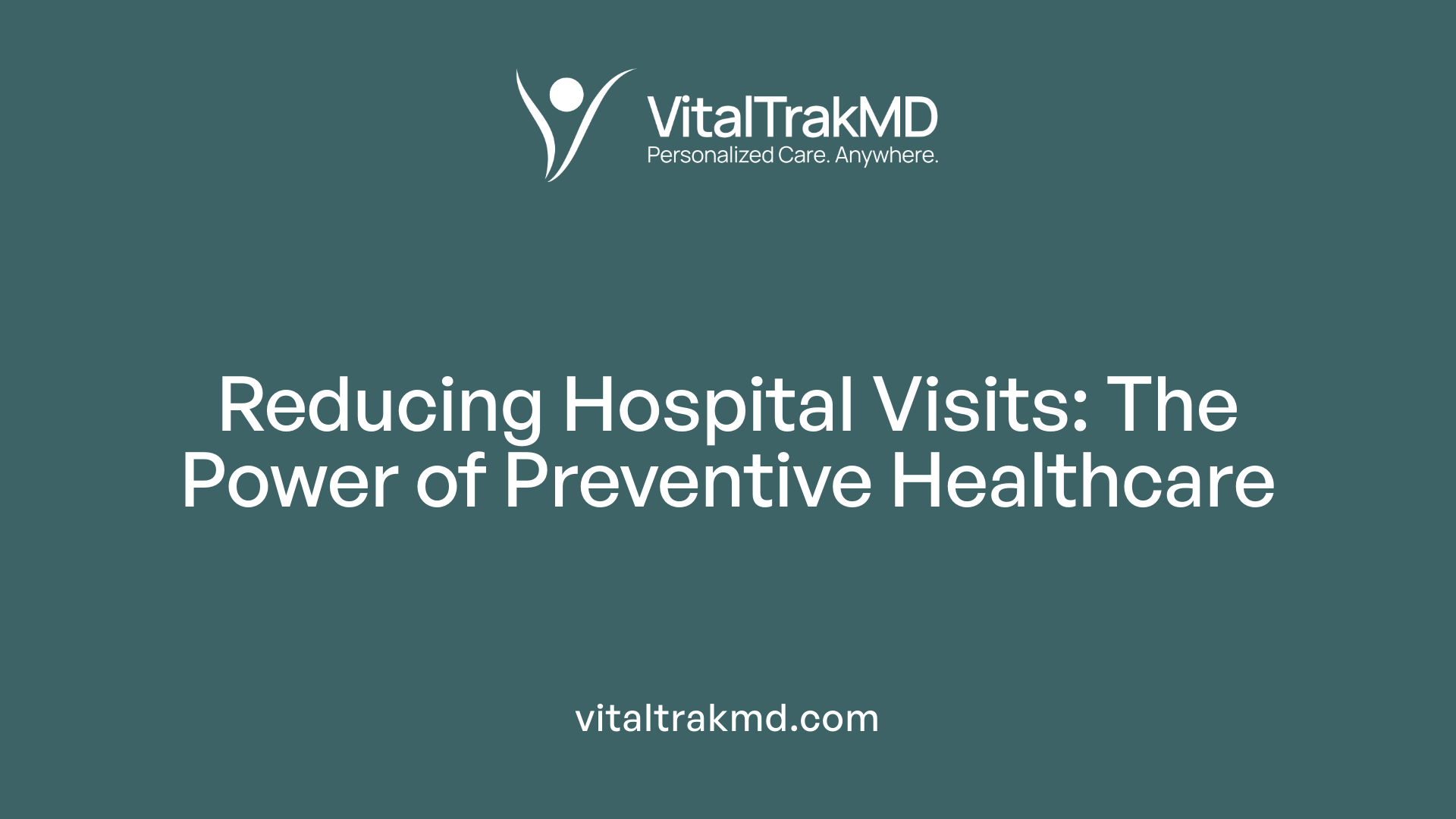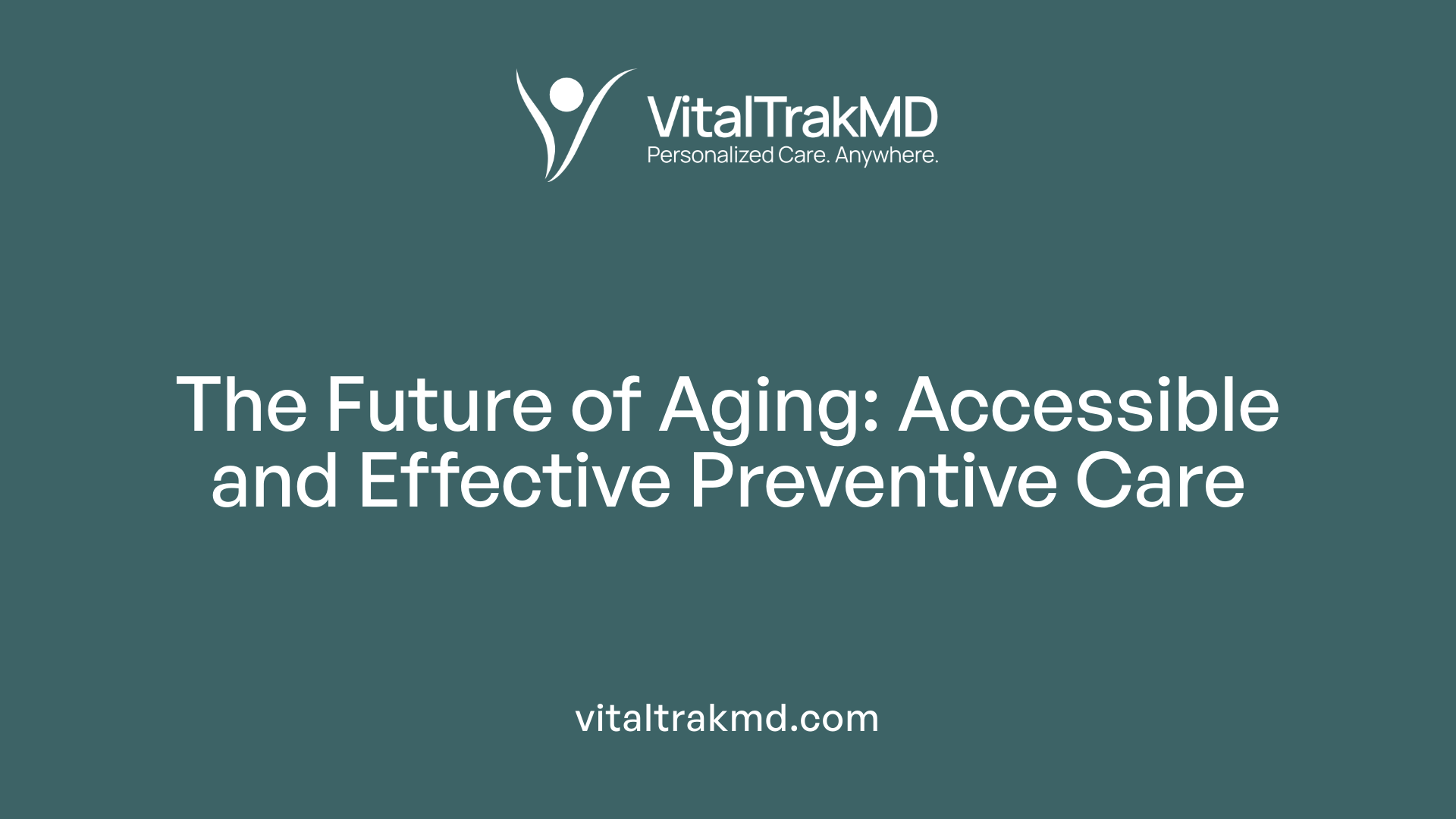How Preventive Care Reduces Hospital Visits in Older Adults

Understanding the Power of Preventive Healthcare in Elderly Populations
As the aging population continues to grow, there is a rising need to focus on preventive healthcare strategies that can mitigate hospital visits among seniors. Preventive care encompasses a broad range of services, including screenings, vaccinations, lifestyle counseling, and chronic disease management, all of which are essential for maintaining health, enhancing quality of life, and reducing healthcare costs. This article explores how proactive health measures influence health outcomes, decrease hospital readmissions, and leverage specific models of care designed for the older adult demographic.
The Link Between Aging Satisfaction and Preventive Service Use

How does aging satisfaction influence engagement with preventive healthcare?
Research shows that seniors who report higher levels of satisfaction with aging are more likely to use preventive health services. This includes essential screenings like cholesterol tests, mammograms, Pap smears, and prostate exams. Such services are crucial for early detection of health issues, which can lead to better management and improved health outcomes.
Interestingly, aging satisfaction does not seem to impact flu vaccination rates, indicating that not all preventive services are influenced equally by psychological factors.
Aging satisfaction might shape health behaviors through various pathways. Psychologically, feeling satisfied with aging can bolster positive beliefs about health and the aging process. Physiologically, these positive attitudes may improve overall well-being, encouraging proactive health actions. Behaviorally, satisfied seniors might be more motivated to participate in health check-ups and screenings.
Fostering aging satisfaction could therefore promote greater use of preventive services, ultimately leading to healthier aging and fewer hospitalizations.
The Impact of Medicare Advantage on Preventive Care Access and Utilization
Why are primary care and preventive interventions important in managing health and preventing hospitalizations in seniors?
Primary care and preventive actions are essential for maintaining health in older adults. These strategies allow for early detection and management of chronic diseases such as diabetes, cardiovascular issues, and cancers, which are common but can be more effectively treated if caught early. Routine screenings like mammograms, Pap tests, colonoscopies, and blood pressure checks enable healthcare providers to identify problems before symptoms worsen.
Preventive care also promotes health education, lifestyle modifications, and personalized planning, which empower seniors to make healthier choices. Innovative approaches, such as telehealth and home visits, improve access, especially for those living far from clinics or with mobility limitations. Such proactive measures not only improve health outcomes but also reduce the need for emergency or inpatient care.
By focusing on prevention, healthcare systems can lower hospitalization rates, hospital readmissions, and avoidable hospital stays. This leads to better quality of life for older adults and reduces overall healthcare costs. Emphasizing primary care and preventive interventions ensures that seniors maintain independence and enjoy a higher standard of living well into their later years.
Higher screening rates in Medicare Advantage beneficiaries
Medicare Advantage beneficiaries participate more frequently in preventive screenings compared to traditional Medicare recipients. They are 4-12% more likely to undergo services such as cholesterol tests, mammograms, Pap smears, and prostate exams. These increased screening rates are linked with earlier disease detection, timely intervention, and better management of health conditions.
This robust screening approach reflects the comprehensive care model offered by Medicare Advantage programs, which often include coordinated health services, health education, and personalized preventive care plans.
Annual wellness visits and post-discharge follow-up benefits
Beneficiaries enrolled in Medicare Advantage also have higher annual wellness visit rates—up to 21% more than those in Fee-for-Service Medicare. These visits are essential for personalized health assessments, updating care plans, and catching potential health issues early.
Additionally, Medicare Advantage enrollees are more likely to receive follow-up care within 7 days after hospital discharge, with rates up to 41% higher. This prompt follow-up reduces the risk of complications, readmissions, and hospitalizations. These efforts enhance recovery and help manage chronic conditions more effectively.
Reductions in hospital readmission rates and avoidable hospitalizations
Medicare Advantage programs contribute to significantly lower hospital readmission rates—by 38-43% within 30 days of discharge—compared to traditional Medicare.
Hispanic and Black beneficiaries in Medicare Advantage also experience 6-12% fewer potentially avoidable hospitalizations, which often result from unmanaged chronic conditions or lack of timely preventive care.
These reduced hospitalizations indicate that proactive health management, coordinated care, and targeted preventive strategies within Medicare Advantage can lead to safer, healthier aging.
| Aspect | Benefit | Additional Details |
|---|---|---|
| Screening Rates | 4-12% higher | Includes cholesterol, cancer screenings, and more |
| Wellness Visits | Up to 21% higher | Regular point for health assessment and plan updates |
| Post-Discharge Follow-up | Up to 41% higher | Ensures continuity of care, detects issues early |
| Hospital Readmissions | 38-43% lower | Less reliance on emergency and inpatient hospital care |
| Avoidable Hospitalizations | 6-12% lower | Especially among minority populations |
Fostering greater access to preventive services through Medicare Advantage leads to healthier aging, lower hospital costs, and improved experiences for older adults.
How Preventive Care Decreases Hospitalizations in Older Adults

How does preventive care decrease hospitalizations among older adults?
Preventive care plays a significant role in reducing hospital stays for seniors by actively managing existing health issues and warding off new health problems. Regular health screenings, such as mammograms, colonoscopies, and blood tests, help detect diseases early, often before symptoms become severe. Vaccinations, including flu and COVID-19 shots, protect older adults from infectious illnesses that could escalate into hospitalization.
Establishing strong relationships between patients and healthcare providers encourages seniors to follow medical advice and stay engaged in their health. Personalized health assessments allow for tailored interventions and ongoing monitoring, which help catch risks early and enable prompt treatment.
Care coordination among multidisciplinary teams further ensures that all health aspects—medical, psychological, and social—are addressed comprehensively. Such an approach guarantees continuous care and timely adjustments to treatment plans, preventing health crises.
Addressing social factors like living conditions, access to nutritious food, and social support through education and community resources can also decrease hospitalizations. When older adults are equipped with lifestyle counseling and behavioral guidance, they are more likely to adopt healthy habits, reducing the risk of chronic conditions worsening.
In essence, preventive healthcare not only helps in early disease detection but also promotes healthier behaviors, effective management of chronic illnesses, and seamless care transitions. All these strategies contribute to lowering unnecessary hospital admissions, thereby enhancing the quality of life for older adults.
The Role and Evidence of Preventive Healthcare in Reducing Hospital Visits

Is there evidence linking preventive healthcare to reduced hospital visits in older populations?
Yes, there is strong evidence that preventive healthcare significantly contributes to reducing hospital visits among older adults. Research shows that comprehensive health management programs focusing on prevention—such as regular health screenings, diagnostics, vaccinations, and personalized health coaching—help improve overall health outcomes and decrease emergency room and urgent care visits.
Programs that emphasize early detection and management of chronic conditions, like diabetes, cardiovascular disease, and chronic kidney disease, lead to fewer hospitalizations. For example, effective primary care practices ensure timely follow-up after hospital discharge, which directly reduces readmission rates by up to 43%.
Studies tracking healthcare costs over multiple years reveal that participants in preventive care programs tend to save on healthcare expenditures. These savings are associated with fewer hospital admissions, lower readmission rates, and increased use of recommended screenings such as mammograms, colonoscopies, and cholesterol tests.
Additionally, increased engagement with preventive services, often facilitated by health plans and innovative programs, enhances health awareness, promotes healthier behaviors, and results in early disease detection—crucial factors in maintaining seniors’ health and independence.
In essence, evidence underscores that proactive preventive healthcare strategies are instrumental in lowering hospital visits, ultimately benefiting both patients and the healthcare system by reducing costs and improving care quality.
How do health management programs support cost savings?
Health management initiatives tailored for older populations focus on chronic disease control and early risk identification. Programs like MDVIP, which offer personalized preventive care, have shown to reduce emergency service utilization by promoting early intervention. Over three years, members of these programs experienced fewer ER and urgent care visits, leading to cost savings that often offset program expenses.
Furthermore, these programs emphasize maintaining strong patient-provider relationships, supporting regular health evaluations, and addressing social determinants of health. This comprehensive approach helps prevent costly complications and hospital stays.
Studies suggest that such personalized, proactive primary care models not only improve individual health outcomes but also help the healthcare system in managing long-term expenses, fostering sustainability.
What behavioral and early detection components are most effective?
Behavioral change interventions, including health education and lifestyle counseling, significantly impact health outcomes. These components lead to fewer hospital admissions by empowering seniors to adopt healthier habits and better manage existing conditions.
Early disease detection through screenings—such as mammograms for breast cancer, Pap tests for cervical cancer, and low-dose CT scans for lung cancer—plays a vital role in preventing severe health crises.
Vaccinations, including flu, COVID-19, and pneumococcal vaccines, reduce infectious disease risks that could otherwise precipitate hospitalization.
Changing the care setting—via home visits or telehealth consultations—also lowers hospital admission rates, especially when combined with patient education.
In summary, integrating behavioral modifications with prompt diagnosis through screenings and vaccinations fosters a preventive environment that effectively reduces hospital visits among our aging population.
| Aspect | Evidence | Impact | Additional Notes |
|---|---|---|---|
| Preventive screenings | Increased screenings linked to fewer hospitalizations | Fewer emergency visits, early disease detection | Mammograms, colonoscopies, cholesterol tests |
| Program engagement | Participation in personalized care reduces ER use | Cost savings and better health management | Programs like MDVIP exemplify this |
| Behavior change strategies | Education and lifestyle counseling lower admissions | Improved functional ability, heightened health awareness | Patient education reduces hospitalizations by 26% |
| Early detection and vaccination | Reduced infectious diseases and early disease signs | Immediate health intervention, fewer severe health events | Flu, COVID-19, lung cancer screening |
This evidence underscores the importance of accessible, personalized, and proactive preventive healthcare strategies in promoting healthier aging and reducing hospital dependence.
Preventive Care Models and Their Outcomes in Older Adults

What is the role of preventive care in reducing hospital visits among older adults?
Preventive care plays a crucial role in decreasing hospital visits among older adults. By enabling early detection and better management of health conditions such as diabetes, heart failure, and chronic obstructive pulmonary disease (COPD), these services help prevent the progression of illnesses that might otherwise require hospitalization.
Consistent primary care and thorough discharge planning also contribute to fewer avoidable hospital stays. For example, higher continuity of care—measured by frequent follow-up visits and effective care coordination—has been linked to a 2% reduction in preventable hospitalizations with each increase in care continuity scores.
Furthermore, lifestyle changes, social support, and tackling social factors like living conditions or access issues strengthen preventive efforts. High-intensity transitional care initiatives, including pre- and post-discharge planning, home visits, and telemonitoring, have shown promising results in lowering emergency department visits shortly after hospital stays.
In summary, patient-centered, integrated prevention approaches that promote regular engagement with health providers are fundamental in reducing unnecessary hospital visits and improving the health span of older adults.
How do personalized preventive care programs like MDVIP impact healthcare utilization?
Personalized programs like MDVIP focus on individualized care strategies, including targeted health screenings, diagnostics, and lifestyle coaching. These programs aim to detect health issues early and tailor interventions to each patient's unique needs.
Studies have shown that members of such personalized programs tend to use fewer emergency room and urgent care services, particularly over three years. This reduction is largely due to effective disease prevention and early intervention, which keep health problems manageable and prevent escalation.
Additionally, personalized care models promote stronger doctor-patient relationships, which encourages ongoing preventive efforts, improves adherence to treatments, and supports healthier aging.
What about the cost-effectiveness and management of health in these approaches?
Implementing personalized preventive care not only improves health outcomes but also offers cost savings over time. For example, programs like MDVIP have demonstrated a trend toward cost neutrality within three years, as increased preventive actions lead to fewer hospitalizations and emergency visits.
By emphasizing early detection and customized interventions, these models help reduce long-term healthcare expenditures and improve resource allocation. They support sustainable health management for the growing older adult population while maintaining high-quality care.
| Aspect | Impact | Additional Details |
|---|---|---|
| Hospital visits | Reduced | Fewer ER visits and hospitalizations due to early intervention |
| Healthcare costs | Potential savings | Trend toward cost neutrality over three years |
| Patient outcomes | Improved | Better functional ability and self-rated health |
| Care approach | Personalized | Focus on tailored prevention, diagnostics, and health coaching |
Through these positive outcomes, personalized prevention models like MDVIP exemplify how proactive, customized healthcare can foster healthier aging and more efficient resource use.
The Future of Preventive Care in Aging Populations

What is the role of preventive care in reducing hospital visits among older adults?
Preventive care plays a vital role in decreasing the need for hospital visits among older adults by catching health issues early before they develop into serious complications. Regular screenings for cancers, cardiovascular diseases, and chronic conditions like diabetes allow for timely intervention, which can prevent disease progression and hospital admissions.
Studies show that effective primary care management, including routine follow-ups and comprehensive discharge planning after hospital stays, can reduce preventable hospitalizations by about 2% for each improvement in care continuity scores. These efforts are complemented by lifestyle changes, social support, and addressing social determinants of health, all of which contribute to healthier behaviors and better overall health.
High-impact strategies for reducing emergency visits include leveraging advancing technologies such as telehealth, expanding mobile clinics, and establishing community health programs. These approaches make healthcare services more accessible, especially for those with mobility challenges or living in remote areas.
Policy initiatives that eliminate cost-sharing barriers and ensure coverage for preventive services are crucial for increasing participation. When services are provided at no or low cost, more seniors are likely to undergo screenings, vaccinations, and health assessments that enable early diagnosis and treatment.
Looking ahead, as these strategies and policies continue to develop, they promise to make preventive care more accessible and effective for aging populations. Ultimately, this will reduce hospital visits, improve health outcomes, and support the independence and quality of life for seniors.
Harnessing Prevention for a Healthier, Independent Aging
In conclusion, preventive care plays a crucial role in reducing hospital visits among older adults by enabling early detection, managing chronic conditions, and encouraging healthier lifestyles. Evidence from diverse care models demonstrates that proactive health strategies, including personalized programs like MDVIP, can lead to significant healthcare savings, improved health outcomes, and higher patient satisfaction. Strengthening primary care systems, expanding access to preventive services, and embracing technological innovations such as telehealth are essential steps towards fostering a resilient, health-oriented aging society. Prioritizing preventive healthcare not only benefits individual health but also enhances the sustainability of healthcare systems facing demographic shifts. Investing in prevention is a vital strategy for ensuring that seniors age with dignity, independence, and optimal health.
References
- Satisfaction with Aging and Use of Preventive Health ...
- New Report: Medicare Advantage Boosts Preventive Care ...
- Keeping Patients Out of the Hospital with Preventive Care
- The Impact of Personalized Preventive Care on Health ...
- Preventive Care - Healthy People 2030 | odphp.health.gov
- Are You Up to Date on Your Preventive Care?
- Maintaining preventive coverage is vital to public health
Recent articles
Want to Feel Better and Live Healthier?
Join hundreds of patients taking control of their health with personalized care that fits their life – not the other way around.
Rated 4.8/5 by 32+ customers







